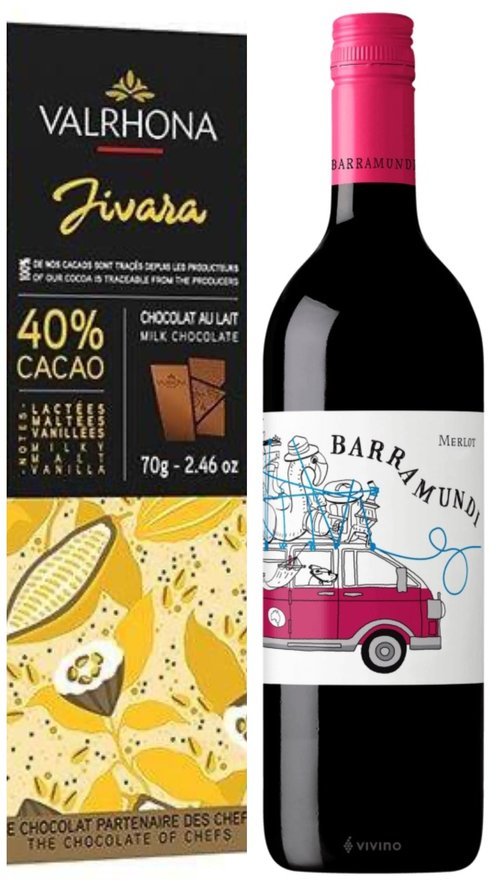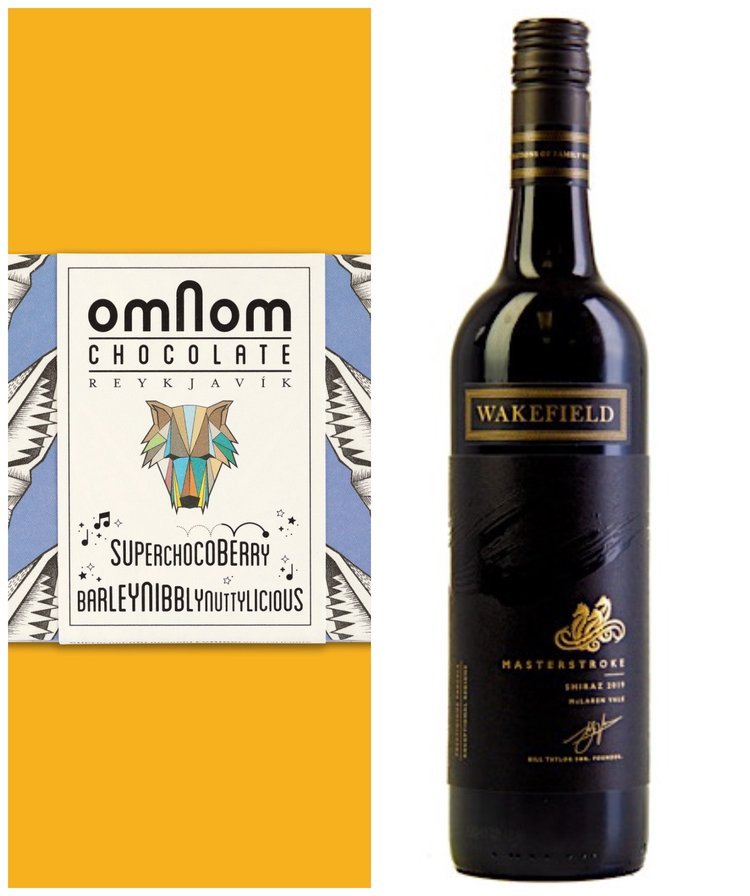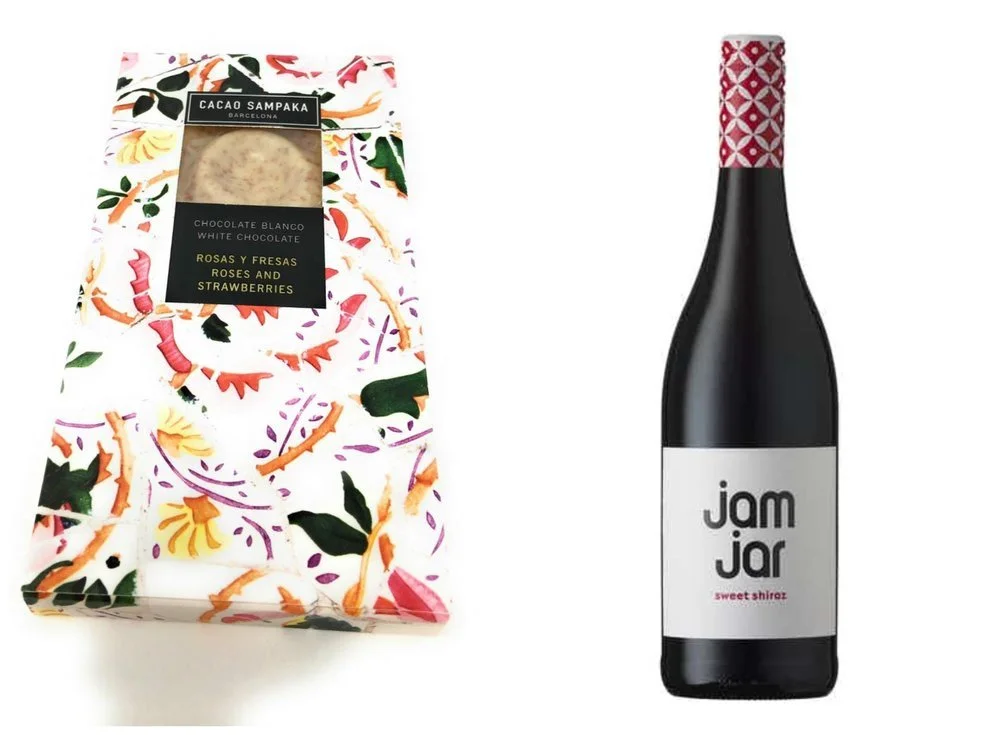4 Ways to Make Chocolate and Red Wine Pair Beautifully
Even though wine and chocolate are two of the most beloved treats in the world, not everyone enjoys the pleasure of creating pairings with them, which is surprising given how many similarities they share. They have lots in common, maybe even more than you think.
They both have flavanols, naturally occurring plant-based compounds that support healthy circulation. Both are fermented foods that have been around for centuries. (Any guess which is older? It’s wine.) Throughout history, cultures have regarded chocolate and wine as aphrodisiacs and used them as signs of wealth and influence.
With all these shared personality traits we should all be enjoying pairings more, beyond the clichéd Valentine’s Day gifts. If done correctly, wine matched with chocolate can be a wonderfully satisfying experience at any time of year. Here are some strategies for pairing chocolate with red wine.
PAIR DARKER CHOCOLATE WITH SWEETER WINE
While chocolate and wine have lots in common, there are some similarities that can actually sabotage a great pairing. For example, both chocolate and wine have tannins in them. These polyphenols are the reason your mouth dries out after taking a sip of dry red wine or eating a morsel of dark chocolate. Pairing really dark chocolate, like 80% cacao or higher, with a burly, tannic red wine might be asking for trouble. The tannins in each will clash, making everything taste bitter.
To keep the pairing from tasting bitter or sour, sip a red wine that has some sweetness to it. The additional sugars will soften the tannins of the chocolate, creating a much more pleasing experience. As a general guideline, the darker the chocolate, the sweeter the wine.
For example, milk chocolate is less intense and softer than dark chocolate, typically having less cacao in it. Not only does a lower cacao content ‘soften’ the flavor intensity, but it also leaves more room for the milk solids that define milk chocolate. Milk fat renders at a lower temperature than cacao, so milk chocolates tend to ‘melt in your mouth’ much more easily, adding to the velvety, rich experience.
Milk chocolate’s creamy texture and mild flavors make it one of the easiest chocolates to pair with wine. Valrhona’s Jivara milk chocolate has 40% cacao and plenty of milk solids, giving it a mellow, malty flavor. Consider a soft, fruit-forward red wine such as pinot noir from California. The silky tannins and bright red fruit tones will match the chocolate’s smoothness effortlessly. Merlot is another great choice. The 2022 Gold winner in the NY International Wine Competition, 2019 Barramundi Merlot from Australia is a great example. The full body of this will pair beautifully.
Darker chocolate calls for sweetness in the wine. How sweet depends on how dark the chocolate is. Original Beans’ 70% Virunga works with a red wine like Italian Brachetto d’Acqui. The wine’s sweet red flavor and slightly carbonated texture make a great pairing. A more intense chocolate such as French Broad Chocolate’s 75% Sea Salt or Raaka’s Bourbon Cask Aged dark chocolate with 82% cacao needs the wine to provide more sweetness. For these bars, a wine like ruby port is a better fit.
HEAVY CHOCOLATE PREFERS HEAVY WINE
Pairing chocolate with wine follows the same general guidelines as pairing anything else to eat and drink, especially when it comes to the weight of what is being considered. The ‘weight’ refers to the heft or fullness of what is being consumed. An orange segment doesn’t have the same weight as a spoonful of peanut butter, for example. Crisp, refreshing pinot grigio doesn’t feel as full in your mouth as Cabernet Sauvignon. When pairing food and drink, making choices that match weights yields much better results. No pinot grigio with beef stew. No Bordeaux with unsalted popcorn.
The same principle applies to pairing chocolate with wine. If the chocolate is straight-forward in texture and flavor, choose a wine that is similarly focused. Amano Artisan Chocolates uses little more than cacao, cocoa butter, sugar, and vanilla in their bars. For these kinds of chocolates, wines with similarly clean lines are best.
A bar with more weight and complexity needs a wine that can keep up with it. Omnom’s Superchocoberrybarleynibblynuttylicious (yes, that’s the actual name) has cranberries, barley, salted almonds, and cacao nibs. A red wine with more body and a touch of residual sugar is best here, for example the 2020 Wakefield Taylors Wines Masterstroke Shiraz. Slightly jammy and round, a Double Gold winner in the 2022 NY International Wine Competition would be a great choice.
PAIR THE INCLUSIONS TO THE WINE
In the world of chocolate, an “inclusion” is any ingredient added to the chocolate beyond the basics needed to create the bar. Ingredients like nuts, dried fruit, and spices are all examples of inclusions. Their job is to enhance the flavor and appearance of the chocolate.
Some inclusions are simple. Taza’s vanilla chocolate disc is a good example of a single inclusion. The vanilla is easy to taste and balances the chocolate flavors beautifully. Other inclusions are more complex. Chequesset Chocolate’s limited-edition Everything Whale Be Alright bar was a wild combination of ingredients including porcini mushroom powder, garlic, candied pineapple, and Szechuan chili flakes.
Pairing red wine with inclusion bars may seem a little like a minefield, but it can be a lot easier than it seems. Use the included ingredients to your advantage. If you are enjoying Amadei’s Toscano Rosso, a 70% cacao bar with dried cherries, raspberries, and strawberries, select a wine that will emphasize those qualities. Italy’s Brachetto d’Acqui is fizzy and fun, with loads of strawberry notes that will lock on to the similar flavors in the chocolate.
PAIR WHITE CHOCOLATE WITH FRUIT-FORWARD RED WINES WITH SOFT TANNINS
White chocolate is often overlooked, not only for wine pairings but in general. The “is it chocolate or not?” debate often has people looking elsewhere when choosing bars. It may not have cocoa solids (the ingredient that makes chocolate brown), but it does have plenty of fat and richness, which makes it a surprisingly good partner for red wine.
Fruit-forward red wines with soft tannins pair beautifully with white chocolate. French Beaujolais is the perfect candidate for a full-bodied bar like Åkesson’s Bejofo Estate Madagascar white chocolate, a masterfully produced white chocolate with tons of cocoa butter in it, serving as a foil for the wine’s bright, fruit personality.
To really bring out the sweet tones, choose a semi-sweet red wine like Jam Jar’s Sweet Shiraz. The mouthfeel and lively berry flavors explode when they meet Cacao Sampaka’s Rose and Strawberry white chocolate bar, creating an irresistible pairing full of red fruit and creamy sweetness.
Originally published on www.chocolateprofessor.com.




